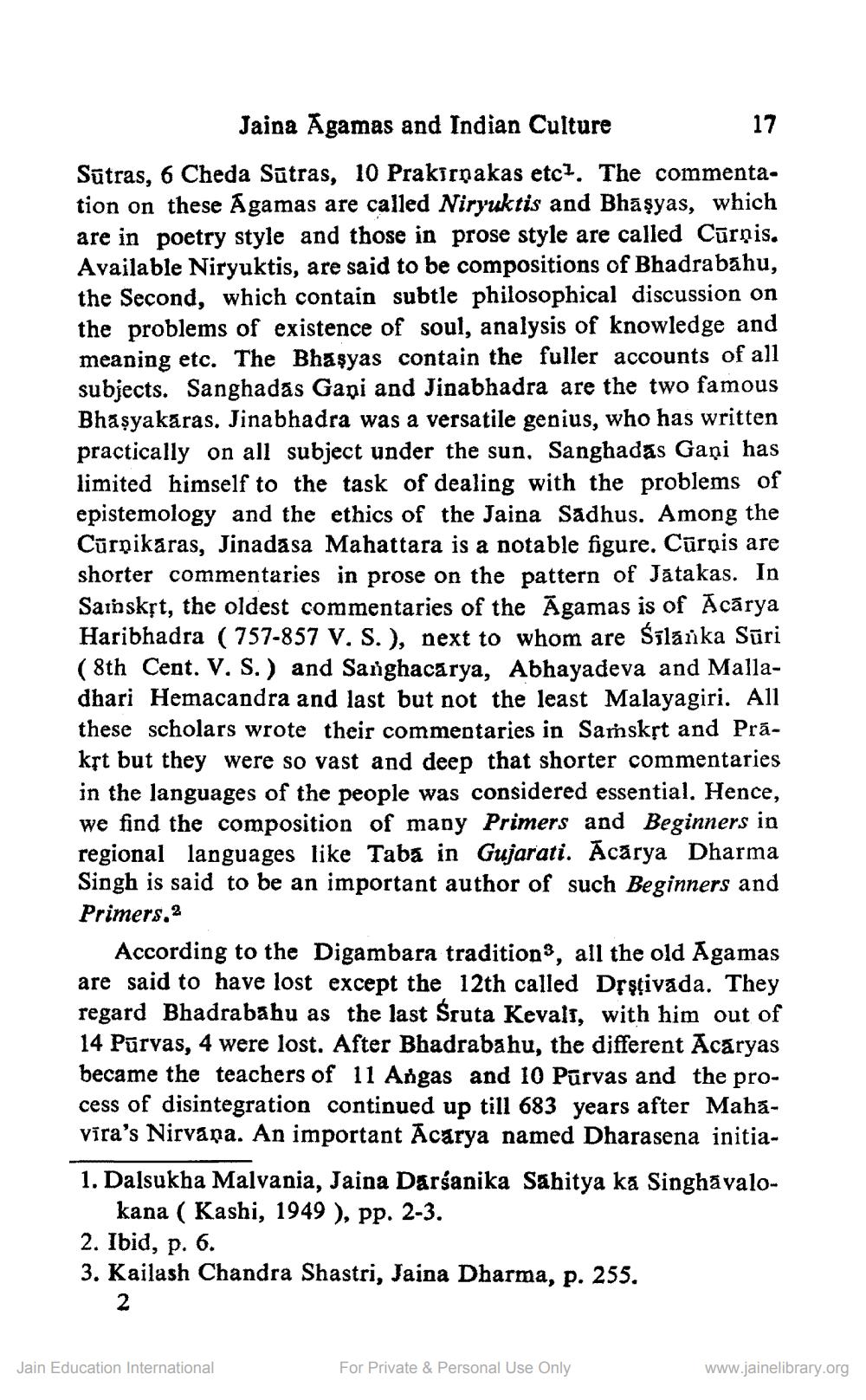________________
Jaina Agamas and Indian Culture
17 Sūtras, 6 Cheda Sūtras, 10 Prakīrpakas etc?. The commentation on these Agamas are called Niryuktis and Bhaşyas, which are in poetry style and those in prose style are called Cūrộis. Available Niryuktis, are said to be compositions of Bhadrabahu, the Second, which contain subtle philosophical discussion on the problems of existence of soul, analysis of knowledge and meaning etc. The Bhasyas contain the fuller accounts of all subjects. Sanghadas Gani and Jinabhadra are the two famous Bhașyakaras. Jinabhadra was a versatile genius, who has written practically on all subject under the sun. Sanghadas Gani has limited himself to the task of dealing with the problems of epistemology and the ethics of the Jaina Sadhus. Among the Cūrpikaras, Jinadasa Mahattara is a notable figure. Cūrpis are shorter commentaries in prose on the pattern of Jatakas. In Sarnskst, the oldest commentaries of the Āgamas is of Acārya Haribhadra ( 757-857 V. S.), next to whom are Śīlāůka Sūri ( 8th Cent. V. S.) and Sanghacarya, Abhayadeva and Malladhari Hemacandra and last but not the least Malayagiri. All these scholars wrote their commentaries in Sarskst and Prákft but they were so vast and deep that shorter commentaries in the languages of the people was considered essential. Hence, we find the composition of many Primers and Beginners in regional languages like Taba in Gujarati. Ācārya Dharma Singh is said to be an important author of such Beginners and Primers, 2
According to the Digambara traditions, all the old Agamas are said to have lost except the 12th called Drşțivada. They regard Bhadrabahu as the last Sruta Kevali, with him out of 14 Pūrvas, 4 were lost. After Bhadrabahu, the different Acaryas became the teachers of 11 Angas and 10 Pārvas and the process of disintegration continued up till 683 years after Mahavira's Nirvana. An important Ācarya named Dharasena initia1. Dalsukha Malvania, Jaina Darśanika Sahitya ka Singhávalo
kana ( Kashi, 1949 ), pp. 2-3. 2. Ibid, p. 6. 3. Kailash Chandra Shastri, Jaina Dharma, p. 255.
Jain Education International
For Private & Personal Use Only
www.jainelibrary.org




